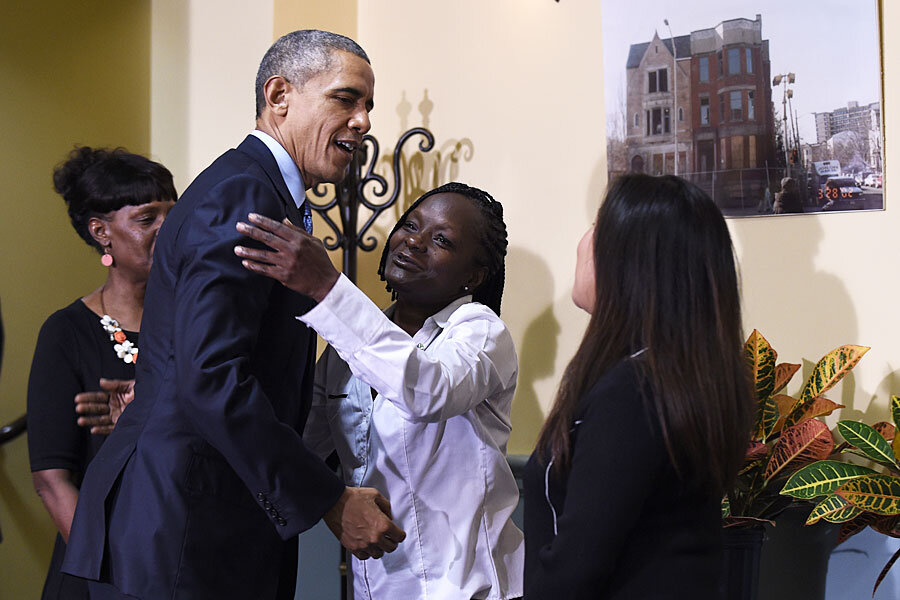Obama pledges more than $100 million towards girls and women of color
Loading...
The White House has pledged more than $100 million toward the economic prosperity of girls and women of color.
Announced at a summit Friday, President Obama’s investment echoes his 2014 “My Brother’s Keeper” initiative that poured $200 million into charities and private institutions to support young men of color.
It has long been known that that young black men are at a higher risk for incarceration, death by homicide, and dropping out of high school. Less well known is that women face similar risks and discrepancies.
For instance, young black women are much more likely to be arrested in school than their white peers. They face disproportionate rates of teen pregnancy and experience the widest pay gaps – 60 cents to every dollar that a white man makes.
Although there has been progress in the overall success of women of color, the White House said in a press release, there is still a long way to go.
“The growth in the number of businesses owned by black women outpaces that of all women-owned firms. Teen births are down, and high school graduation and college enrollment rates are up,” the statement reads. “However, opportunity gaps and structural barriers still remain.”
The solution: A five-year funding initiative called Prosperity Together that devotes $100 million to low-income women, and an additional $18 million from a collection of research institutions called the Collaborative to Advance Equity through Research to continue studying the living conditions of women and girls of color.
Friday's summit featured an all-day panel forum with 30 speakers from various organizations. The forum, called “Advancing Equity for Women and Girls of Color,” took place at Wake Forest University and in conjunction with the release of a report with the same name by the the Council on Women and Girls. In the report, advocates cite the different opportunity gaps girls and women face in the United States, such as low participation in STEM (Science, Technology, Engineering, and Math) fields.
The report outlines five main goals on which the White House initiative is to focus, including reducing exclusionary school discipline practices such as suspension, offering emotional support to victims of abuse and trauma, incentivizing STEM education, sustaining reduced rates of teen pregnancy, and tackling economic obstacles.
At 12 percent, black girls are suspended twice as often as white boys and six times more than white girls. Research has shown that punitive punishments such as at-home suspensions can cause lower graduation rates.
Black girls also comprise a disproportionate number of arrests, many of which are the consequence of what's known as "the sexual-abuse-to-prison pipeline.” To combat this issue, the report suggests more trauma-sensitive programming at youth organizations.
As one of the guest speakers, Streetwise and Safe's Andrea Ritchie also shed some light on the inordinate police misconduct that minority women and LGBT communities face.
"In 2010, sexual misconduct was the second-most reported form of police misconduct against women or LGBT people of color," she said. "Many of those violent acts take place in the context of calls for help."
President Obama has spoke out against the inequalities of minority women before, addressing the Congressional Black Caucus in September.
“When women of color aren’t given the opportunity to live up to their God-given potential, we all lose out on their talents; we’re not as good a country as we can be,” Obama said.
“So we’re going to have to close those economic gaps so that hardworking women of all races, and black women in particular, can support families and strengthen communities and contribute to our country’s success.”








